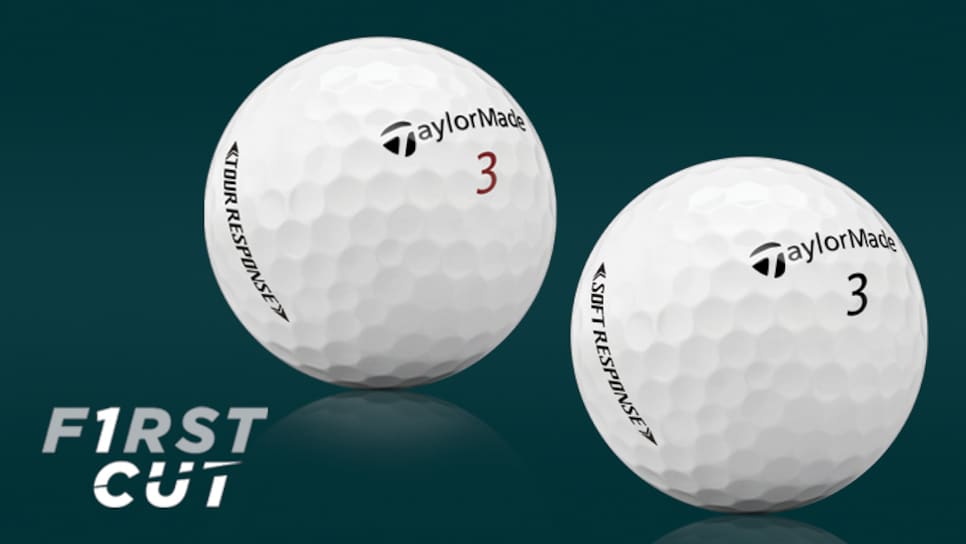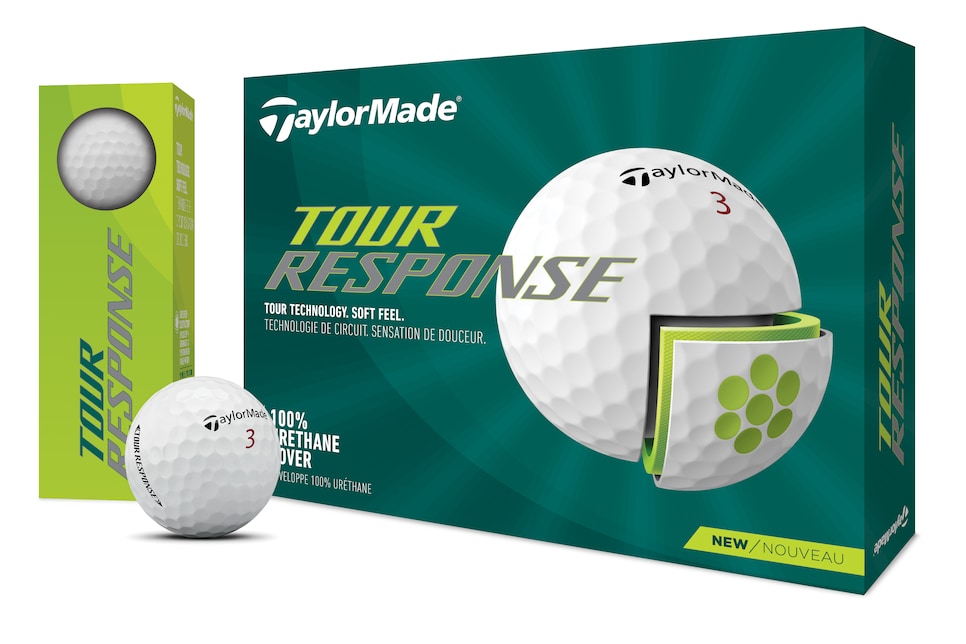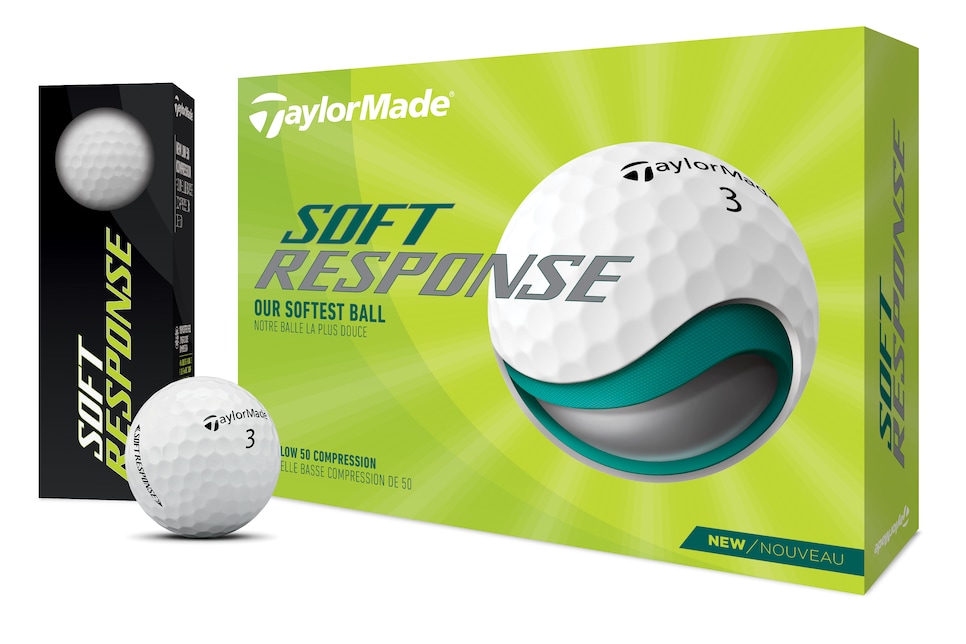Equipment
TaylorMade Tour Response, Soft Response golf balls: What you need to know

WHAT YOU NEED TO KNOW: TaylorMade again targets average golfers with its latest updates to the Tour Response and Soft Response balls. The three-piece Tour Response incorporates the new dimple pattern and cast urethane cover of its tour-played TP5 balls for better flight and higher spin, but it features a softer compression aimed at non-tour-level swings. The low-compression Soft Response, which is a three-piece ball with an ionomer cover, enhances distance and softer feel with its firm mantle beneath a softer but durable cover.
PRICE: Tour Response and Tour Response Stripe, which features a wide aiming line along the circumference of the ball, $40 per dozen. Soft Response, $30 per dozen.

THE DEEP DIVE: Among the endless cycle of deficiencies average golfers face when comparing themselves to tour players is, of course, speed. Speed, or more specifically the lack of it, is a particular problem when it comes to the golf ball because while speed keys distance, it is fundamentally difficult to maximize speed in a golf ball that’s designed for players whose lack of speed leads them to gravitate toward a golf ball with a lower compression.
TaylorMade’s new Tour Response and Soft Response balls, updated for 2022, are going after that need to enhance speed for average golfers by focusing on the smallest and even sometimes unseen elements of the construction of the ball. In simple terms, the Tour Response offers tour-ball-like spin and control through its cast urethane cover with distance-enhancing elements in its dimple pattern, mantle layer and core, while the Soft Response uses the unseen mantle layer in its three-piece construction to energize the company’s softest ball with more resilience for better distance.
The second-generation Tour Response features a 70 compression, among the softest of balls with a multilayer urethane construction. That normally makes it harder for the ball to maximize speed because it lacks the resiliency at impact of a firmer compression ball like those seen in the company’s TP5 and TP5x balls. But the Tour Response borrows the speed-enhancing effects of those ball’s mantle layer to inject more energy into its softer compression.
Called “SpeedMantle,” this element works with the core more efficiently due to a higher flex modulus than previous mantle layers designed for both its predecessor and similar average player “tour” balls like the company’s Project (a), said Ben Raymond, senior golf ball engineer at TaylorMade. “Aside from being a higher flex modulus, this is also a more resilient material so it retains energy better after impact for higher ball speeds,” he said.
What makes the Tour Response even more effective at giving average golfers the distance their lack of speed can’t naturally provide them is its cover. Specifically, it uses the same sort of dimple design found on the TP5 and TP5x balls. Rather than the typical spherical shaped depressions in the cover, the Tour Response uses a dimple that’s flatter, shallower but with steeper sides. That creates the same volume for better air flow but yields better performance at a broader range of speeds, Raymond said. The key was looking at how the ball moves through the air at everything from 60 miles per hour to north of 160 miles per hour.
“Aero is really all about optimizing lift and drag, and the volume and the depth of your dimple shape are really the main influencers of lift and drag,” he said. “With our spherical dimple before, when you’re changing volume, you’re changing depth and you’re also impacting lift and drag in the same way. So being able to decouple the volume and the depth allowed us to decouple lift and drag and really optimize for each stage of the ball flight.
“When we test this we look at 24 different conditions of speed and spin. When you’re looking at aero you still have to account not just for the initial velocity but the entire range of velocities throughout flight. That’s what we mean when we talk about optimizing lift and drag. It’s not just for one speed, it’s for the entire range of speeds that ball may experience.”
Raymond said while previous patterns were very good with the high speeds right off the face of a tour player’s driver, it’s later, when the ball is moving at the same speed for all players, that the new dimple is most beneficial. “The 'a-ha' moment came when we learned that when the ball peaks in flight and starts to descend there’s an opportunity to manipulate drag and lift in that part of the flight, too,” he said. “We could elevate lift to keep that ball in the air longer.”

That dimple pattern might be noticeable to the average player’s eye, but even more distinct is a version of the Tour Response called Tour Reponse Stripe. It features a wider alignment band in optic yellow that wraps around the entire ball. At 22 millimeters wide it’s more than half the ball’s total surface area.
“This is exciting for us because it gave us a whole new opportunity of creativity around a golf ball,” said Joshua Dipert, director of golf ball research and development. “The fact is you can pick up your ball and align it two or three times every hole, so why wouldn’t we give you some type of feedback or design some way to make that easier or beneficial?
“What we found was this design element not only was more accurate to align, it was quicker too.”
Another kind of quicker was behind the thinking of the Soft Response, which uses an ionomer cover like those found on many low-compression distance balls. The Soft Response features a three-piece construction that allows the ball’s overall softer compression to get distance from a firmer mantle layer between the cover and core, this despite the Soft Response’s 50 compression rating, which is ten points lower than its previous version.

“With the softer two-piece ball you can get your speed through a firmer cover, but we’re able to use a faster, more resilient mantle layer to bump the speed up and still use a softer cover to maintain that feel, and get some better spin around the green as well,” Raymond said. He added that the company’s improved manufacturing processes and equipment allowed them to mix the firmer mantle with the softer elements “to maintain speed at a softer feel.”
The Tour Response (white and yellow) and Tour Response Stripe will retail for $40 per dozen. The Soft Response (white and yellow) will run $30 per dozen.